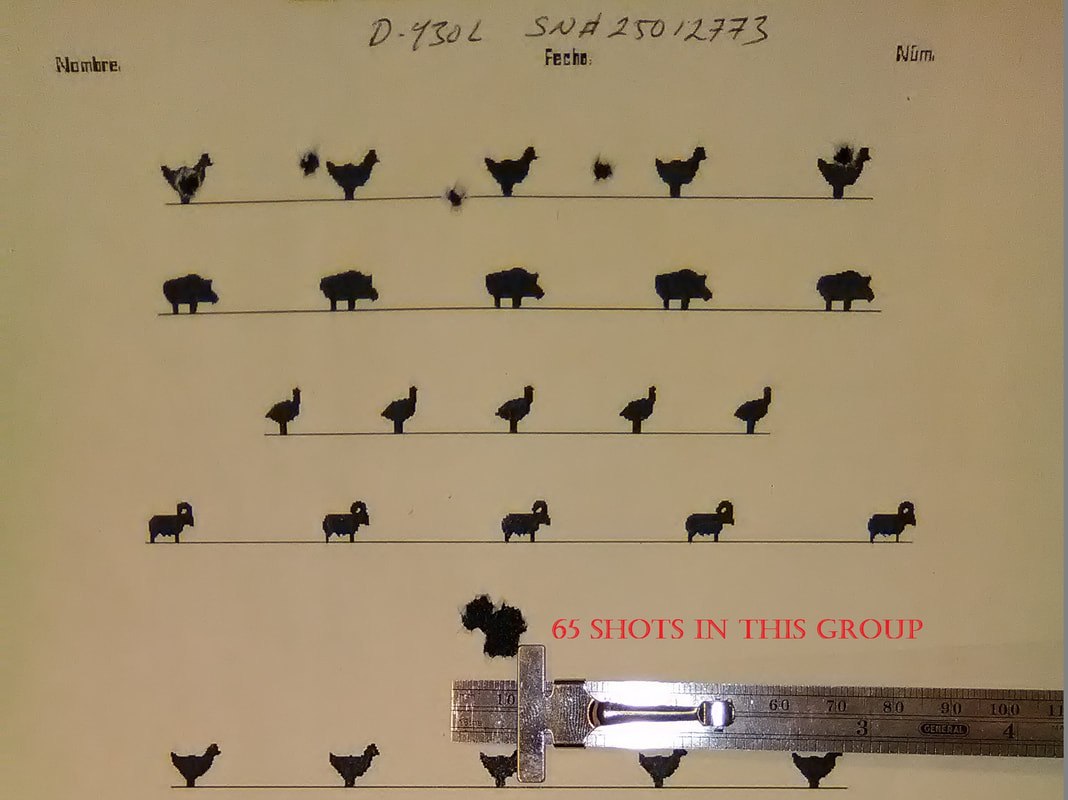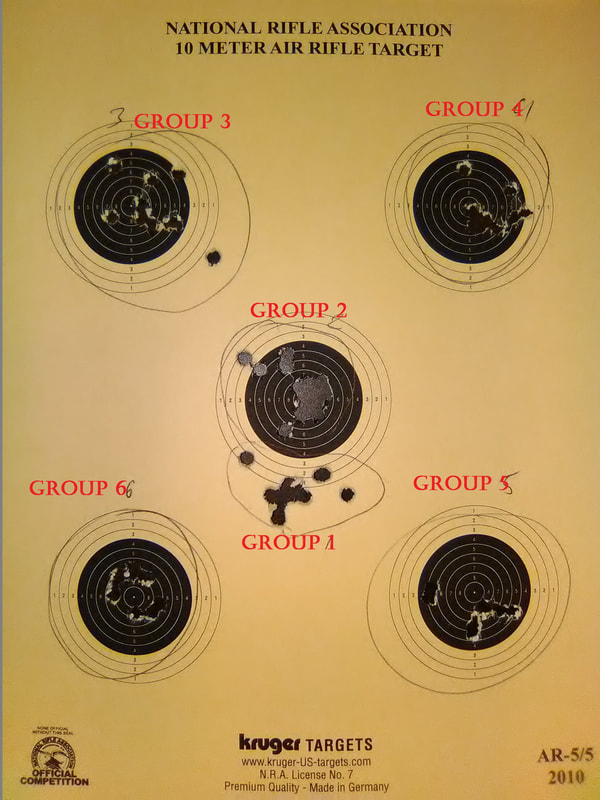Part 3.- First Shots
There is little sense in chronoing and defining a pellet in a gun that has not been "run-in".
In part 1 we looked into the history of the rifle; and in part 2 we looked into the gun itself.
On this part 3 we'll go into those first crucial shots.
The first shots of ANY barrel are crucial to the accurate life of the barrel. In SOME guns, this accurate life may be as short as a few hundred to a thousand rounds (Wildcats, like the 0.22" / 338 Wby Mag), in some other guns, that accurate life may have the potential to be as long as hundreds of thousands of rounds (airguns in general).
BUT, unless you want to find yourself in the need of some heroic measures, like fire-lapping the barrel, then your best bet is to simply do it right from the beginning.
It does require patience and perseverance, but it can be done, and as long as you keep the final goal in mind it is not THAT bothersome. It just takes time.
What you see here is the first target shot with the 430L
The shots were taken indoors at 15 yards (though the target was designed for offhand shooting at 6 yards, the small size of the animals makes it a fun target to shoot from the FT position).
The ruler is set to 12 mm's (a tad less than ½") and the process to create the group (and to start the run-in of the barrel) was as follows:
1 shot, clean
another shot, clean
repeat for 10 shots (so far, 10 shots)
Now take 5 shots, clean
another 5 shots, clean
repeat till you accumulate 10 cleans (so far, 60 shots)
Now take 10 shots (5 into the group and then one at each chicken), clean
So in this card we accumulated 70 shots.
Time came to get serious and to go to the Monday night airgun practice at DIFTA.
The range there is 10 meters, so I took some targets that are designed for 10 meters, and used one target from those supplied by the club to do some more "running-in""
All groups were shot offhand at 10 meters, as required by the rules of the range.
At the same time that the groups were being shot, the scope was being sighted in, after group 4 I reduced the magnification from 9X to 4X (which is about the same as using match iron sights) and proceeded to shoot groups 5 and 6.
It is clear that the gun is starting to settle, groups are becoming rounder, and more controllable.
The fact that group 6 is a "doughnut" speaks more about the shooter's limitations (fatigue and lack of practice) than about the gun's performance.
So, by this time, the rifle has gone through 130 shots and it has been on a regimen of shoot 10/clean for 7 times.
Because the range session was coming to an end, I decided to shoot a silhouette half course (20 shots), and I would say that the result (14 out 20) is about what could be expected from a new gun and the lack of practice of this winter (there has been no Zimmer-Silhouetten shoot this year, too busy).
On the last row (the rams), I took the precaution of resetting the ZR Mounts for every shot (by pushing it forward and letting it go), and that improved the repeatability of the POI.
So, there you have it, the first 150 shots of the new 430L
All in all, I would say that, based on past experience, this gun can/should yield groups of about ½" at 30 yards when properly setup and using the pellets that the barrel will settle into best.
The shot cycle is very nice and completely vibration free. It is quick and authoritative. Nothing "mushy" about the gun, the lockup or the shot cycle.
It DOES take a special technique to cock for extended sessions, as the effort is concentrated on just about 5/8ths-3/4rs of the possible cocking stroke. So a good, sudden, pull that can JUST get the gun cocked is the best way to deal with this.
The 430, the 430L and the 460 share the same lock-up, and so, I will be attentive to detect if this particular model suffers from the same "weaknesses" as those other models. Luckily, those "weaknesses", are well documented and easy to solve.
Am I happy with my purchase? YES!, most of the friends at the shoot complimented the stock, and the looks of the gun, and some even complimented the shooting, LOL! But then they are good friends.
At this price level ($300 + Sh) it is clearly one of the most accurate 0.177" cal springers in this power range.
With this, we're halfway to the 300 shots minimum that I would consider essential to be made under absolutely controlled conditions, once we reach the 300 number, we can open the gun (to do some "looksee" and decide whether it would be wise to get it tuned and to what extent); work on the mounts and on finding the magic pellet; and ,hopefully, add a better scope worthy of the long range capabilities of this little gun.
Keep well and shoot straight!
HM



 RSS Feed
RSS Feed